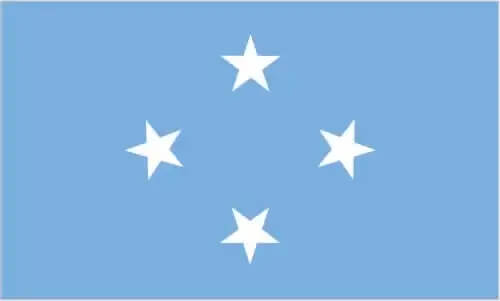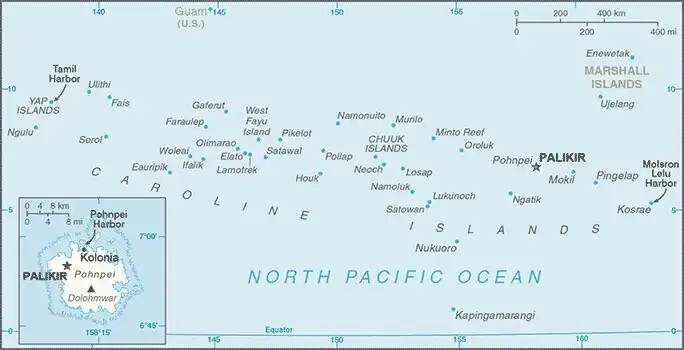World Book
Micronesia
Introduction
Background
The Federated States of Micronesia are a widely scattered archipelago in the western Pacific Ocean. They became part of a UN Trust Territory under US administration following World War II. The eastern four island groups adopted a constitution in 1979 and chose to become the Federated States of Micronesia in free association with the US. Eligible Micronesians can live, work, and study in any part of the US and its territories without a visa.
Geography
Area
total : 702 sq km
land: 702 sq km
water: 0 sq km
Climate
tropical; heavy year-round rainfall, especially in the eastern islands; located on southern edge of the typhoon belt with occasionally severe damage
Natural resources
timber, marine products, deep-seabed minerals, phosphate
People and Society
Population
total: 99,603 (2024 est.)
Ethnic groups
Chuukese/Mortlockese 49.3%, Pohnpeian 29.8%, Kosraean 6.3%, Yapese 5.7%, Yap outer islanders 5.1%, Polynesian 1.6%, Asian 1.4%, other 0.8% (2010 est.)
Languages
English (official and common language), Chuukese, Kosrean, Pohnpeian, Yapese, Ulithian, Woleaian, Nukuoro, Kapingamarangi
Religions
Roman Catholic 54.7%, Protestant 41.1% (includes Congregational 38.5%, Baptist 1.1%, Seventh Day Adventist 0.8%, Assembly of God 0.7%), Church of Jesus Christ 1.5%, other 1.9%, none 0.7%, unspecified 0.1% (2010 est.)
Population growth rate
-0.73% (2024 est.)
Government
Government type
federal republic in free association with the US
Capital
name: Palikir
Executive branch
chief of state: President Wesley W. SIMINA (since 12 May 2023)
head of government: President Wesley W. SIMINA (since 12 May 2023)
Diplomatic representation in the US
chief of mission: Ambassador Jackson T. SORAM (since 27 February 2024)
Diplomatic representation from the US
chief of mission: Ambassador Jennifer JOHNSON (since 13 September 2023)
Economy
Economic overview
lower middle-income Pacific island economy; US aid reliance, sunsetting in 2024; low entrepreneurship; mostly fishing and farming; US dollar user; no patent laws; tourism remains underdeveloped; significant corruption
Real GDP (purchasing power parity)
$432.679 million (2024 est.)
$429.59 million (2023 est.)
$427.529 million (2022 est.)
Real GDP per capita
$3,800 (2024 est.)
$3,800 (2023 est.)
$3,800 (2022 est.)
Exports
$129.5 million (2024 est.)
$125.789 million (2023 est.)
$90.466 million (2022 est.)
Exports - partners
Thailand 64%, China 16%, Philippines 11%, Japan 5%, Ecuador 1% (2023)
Exports - commodities
fish, diamonds, garments (2023)
Imports
$325.9 million (2024 est.)
$310.669 million (2023 est.)
$274.334 million (2022 est.)
Imports - partners
USA 35%, China 20%, Japan 13%, Taiwan 6%, Philippines 4% (2023)
Imports - commodities
poultry, fish, plastic products, cars, prepared meat (2023)
Human Development Index
The country's Human Development Index (HDI) is 0.615, ranking it 149th out of 193 countries tested. (more information)



